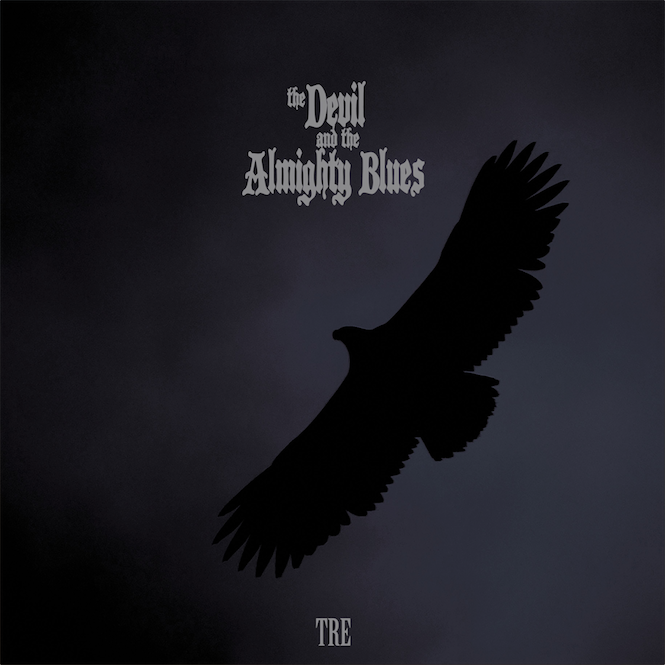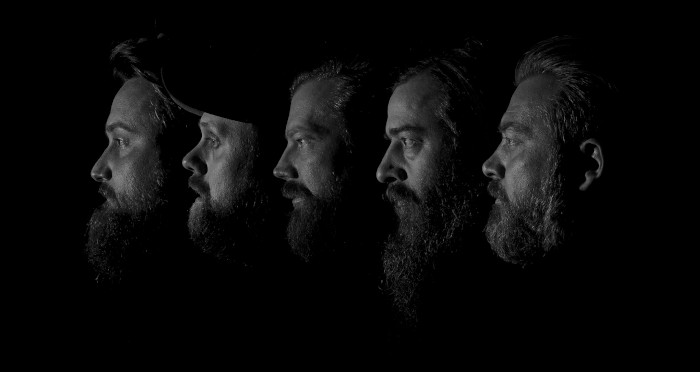The Devil and the Almighty Blues‘ third album, titled simply Tre, arrives through Blues for the Red Sun Records almost exactly two years after its predecessor, II (review here). That in turn came out two years after their 2015 self-titled debut (review here). They are, it would seem, like clockwork. And just as II showed up and demonstrated a marked growth from the first record, so too does Tre push the Oslo, Norway, five-piece to a new echelon in their craft. It shares some methods with the preceding outing, including opening with its longest track (immediate points) in the 12-minute “Salt the Earth,” but finds the band — a returning lineup of vocalist Arnt O. Andersen, guitarists Petter Svee and Torgeir Waldemar Engen, bassist Kim Skaug and drummer Kenneth Simonsen — refining their style to a point of moving beyond their influences and truly stepping into their own style.
Oh, there’s the devil, and there’s the blues, and if you hold your breath long enough, you might even get a glimpse of the almighty, but much of what the band does so well throughout Tre can be heard in the eight-minute side B opener “Heart of the Mountain,” which finds the perfect tempo so that the measures of its verses don’t even seem cyclical so much as an unfolding line, and which bleeds soul from Andersen‘s vocals as well as the lead guitar and metered groove. The Devil and the Almighty Blues aren’t in a rush, and even when they offer up a bit of boogie, as on the hook-laden “Lay Down” or the penultimate “No Man’s Land,” they do so with a sense of poise that speaks not only to the confidence of their delivery, but how well they know what they want out of their songwriting. To listen to the background gospel vocals in second track “One for Sorrow” or even the quiet break in “Salt the Earth” that follows the chorus at about the 6:40 mark, one of The Devil and the Almighty Blues‘ greatest assets on Tre is the sense of space in the recording, and almost as important as how they fill it is how and when they choose to not fill it.
The verse of “One for Sorrow” wants nothing for sounding full. Its lead and rhythm guitar and bass tones are rich, its drums are understated but not absent, and its vocals are forward in classic fashion, yet even when the song — which is the shortest on Tre at 5:13, so well paired with the opener before it — sweeps into its more raucous solo section in the second half, there is still a bit of what seems to be space in the mix. Mastered at lower overall volume for vinyl, maybe? If that’s the case, then the adage about doing so letting a more natural and classic-style dynamic shine through certainly holds, as The Devil and the Almighty Blues have never sound so in charge of their direction as they do on this 48-minute six-tracker, but either way, the impression isn’t that the band are somehow holding back, but almost like they’re struggling against something bigger than themselves.
“Salt the Earth” very much sets the tone for this, from its soft opening to how its memorable chorus playing out in an echo cutting through held-out lumbering progression with a layer of backing vocals behind, a depth that seems only to go deeper in the aforementioned break, which they build up to a consuming place and still remain well in control, as shown in the melancholy guitar harmonies that take the place where a grandiose apex solo might otherwise show up. This is the band serving the song, the song serving the album and the album serving the expression. Tre casts the most resonant vibe The Devil and the Almighty Blues have yet conjured, and whether it’s the particularly Scandinavian-sounding classicism of “No Man’s Land” or closer “Time Ruins Everything” seeming to lose itself — but not actually getting lost — in the downtrodden soul of its chorus before it breaks à la “Salt the Earth” in order to set up the last push, which does feature the solo that might otherwise have come too soon in the opener.
Everything has its place, the band have a place in the moody aspect they create throughout Tre. The performance they give throughout “Lay Down” and “Heart of the Mountain” as side A gives way to side B isn’t to be missed, for its naturalism as well as the fluidity of the band’s conversing with aesthetic, and the atmosphere that results isn’t ever forced or overly dramatic; it just is. With subtlety and care, The Devil and the Almighty Blues build the world in which their tracks inhabit — and, I’d argue, thrive — and even more than two years ago, those tracks are able to affect the listener in multiple ways, whether its the well-placed upticks in motion with “Lay Down” and “No Man’s Land,” the crescendos in “Heart of the Mountain” and “Time Ruins Everything” or the organic feel that serves to tie it all together as a single work.
One thing to note. I went back and looked at the review for II, and it was laced with comparisons to other bands. I have none to make for Tre. One can hear shades of this and that, but nothing stands out so much as the level to which The Devil and the Almighty Blues have left their own mark on this material. Listening to the album, it is easy to believe this is to what their work up till now has been leading, and that may be the case, or Tre might just be another step forward on their path, but the sense of arrival here is palpable, and in kind with the quality of the songs, it makes The Devil and the Almighty Blues come across as all the more powerful in their approach. Not because they’re the loudest, or because they’re the most aggressive, or they have the nastiest tones, but because they give life to something that is theirs entirely, and because you can’t hear it and imagine you’re listening to someone else.
The Devil and the Almighty Blues on Thee Facebooks
The Devil and the Almighty Blues on Bandcamp

